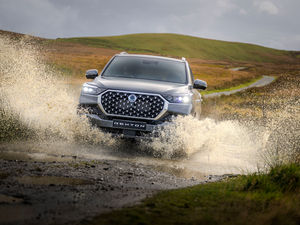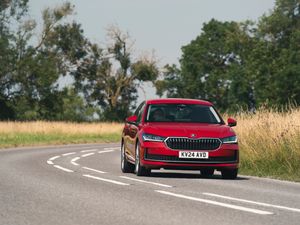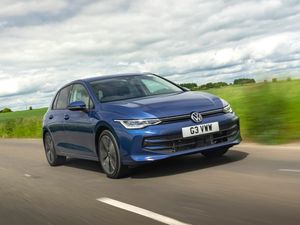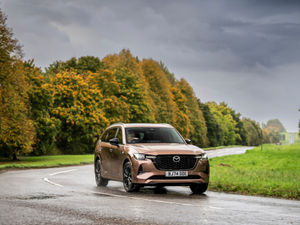First Ride: Triumph’s Daytona 660 is a new take on a classic name
The new 660cc-powered Daytona continues a name which has been in use for decades, but is this bike any good? Jack Evans finds out.
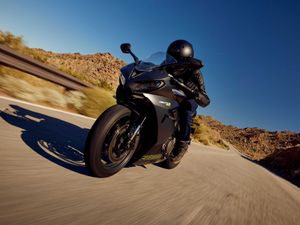
What is it?

>
The Daytona name is one of Triumph’s most recognisable. Branded onto some of the British firm’s most accomplished sportsbikes, the Daytona name has been around since the late 1990s, though its history stretches as far back as the 60s and Triumph’s role in motorsport.
This year marks a new chapter of the Daytona story. The new Daytona 660 is a fresh take on what has come before it, bringing a slightly less aggressive setup overall, a more user-friendly engine and – crucially – a more budget-friendly price than those which accompanied previous incarnations. But is this new Daytona 660 worth considering? We’ve been finding out.
What’s new?

>
As mentioned, this new Daytona 660 is a box-fresh model and has very little in common with the Daytona 675 which came before it. While it may share many aspects with the new Trident 600, this is an extensively reworked machine – both in terms of riding experience and outright performance – to help make differentiating the two a little easier.
It’s a hotly contested market, too, with Suzuki’s GSX-8R being in the crosshairs for the Daytona 660. It’s one of the key reasons why this new bike starts at £8,595 to ensure it stays level with its competitors, but as we’ll look at later there are some caveats to that price.
What’s it powered by?

>
As the name suggests, powering this Daytona is a 660cc triple engine, stoked to produce 93.7bhp – quite a bit more than the 80bhp that you’ll find in the Trident. A larger airbox allows this engine to breathe more freely than in the Trident, too, while a 12,650rpm redline means you can fully explore everything that the Daytona’s engine has to offer. A six-speed manual gearbox comes as standard, though a quickshifter is sadly absent from the Daytona’s list of included equipment – you’ll need to pay extra for this if you want it.
Upgraded engine internals and a three-into-one exhaust ensure that the Daytona is comprehensively upgraded over the Trident, while Showa 41mm forks are found up front and work alongside a preloaded adjustable monoshock at the rear – again from Showa.
What’s it like to ride?

>
That triple engine brings some character to the Daytona almost immediately. It’s got a near racing-like sound to it – even when idling – and helps to set to the tone for the ride ahead. Lightness feels like the Daytona’s key attribute and through sharper corners, it’s this featherweight feel that pays dividends. The gearbox is pleasant enough to use, too, and shifting up and down is an enjoyable process. Again, a quickshifter would be nice – particularly when you’re going a little quicker – but the standard ‘box is more than easy enough to get along with.
Despite its racier looks, the Daytona isn’t as wrist-heavy as you might think. The handlebars are significantly lower than those on the Trident, but we found that longer journeys didn’t prove as uncomfortable as first impressions of this bike would lead you to believe. In fact, it’s quite good on a cruise, while decent fuel economy should mean you’re not fuelling up too often.
How does it look?

>
With its matte-black paint, ‘our’ test Daytona certainly had a stealthy look to it. Highlighted by lime green accents it’s a mean-looking machine – though the rear licence plate hangar is quite ugly in comparison and would do well to be replaced by a more aesthetically pleasing tail tidy arrangement.
As standard, you’re only getting a basic white colour, however. If you fancy one of the more interesting colourways – such as the matte black we’ve tested or a cool-looking red arrangement – then you’ll need to pay £100 extra, which seems a little mean. As with other Triumph models you can choose from a wide variety of accessories to tweak the look of your bike, including a colour-matching seat cowl which gives an even more aero-focused appearance.
What’s the spec like?

>
At £8,595, is fraction cheaper than the £8,999 Suzuki GSX-8R. However, that model does come with a quickshifter included as standard, and you’ll have to pay an additional £309 to add one to the Daytona, including the cost of the fitting kit. Throw in an extra paint scheme and you’re exceeding the cost of this Triumph’s rivals. However, if you can do without a quickshifter and are happy with an all-white bike, then the Daytona does a good job of undercutting those it is up against.
The LCD main display is where you’ll find all of your key information and while it is easy and clear to read, it does have a slightly old-school feel to it. That said, all of the major controls have a nice chunky feel to them and, as mentioned, you can upgrade the Daytona in a variety of ways through a near-exhaustive list of accessories.
Verdict
The Daytona 660 may not be a like-for-like follow-on from the bikes which came before it, but that’s not such a bad thing. This is a lightweight, good-looking and enjoyable-to-ride middleweight bike that brings a good level of finish for a price which is in line with rivals.
It’d be nice if a quickshifter were included from the off – and if some of the paint schemes were no-cost options – but the Daytona 660 feels like a fresh take on what is a very recognisable name. Sometimes things need to change in order to grow and the Daytona 660 feels like an example of this.


